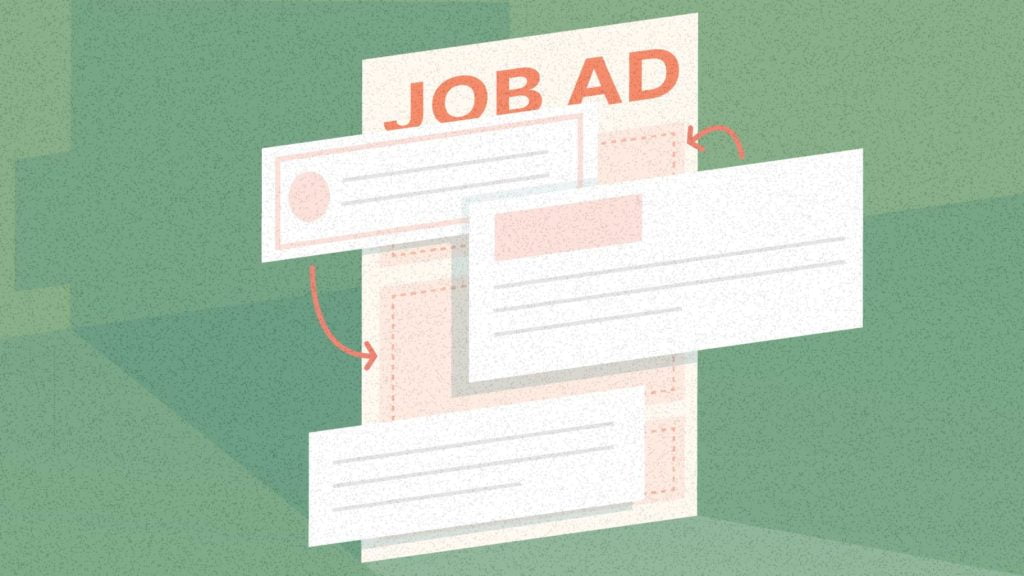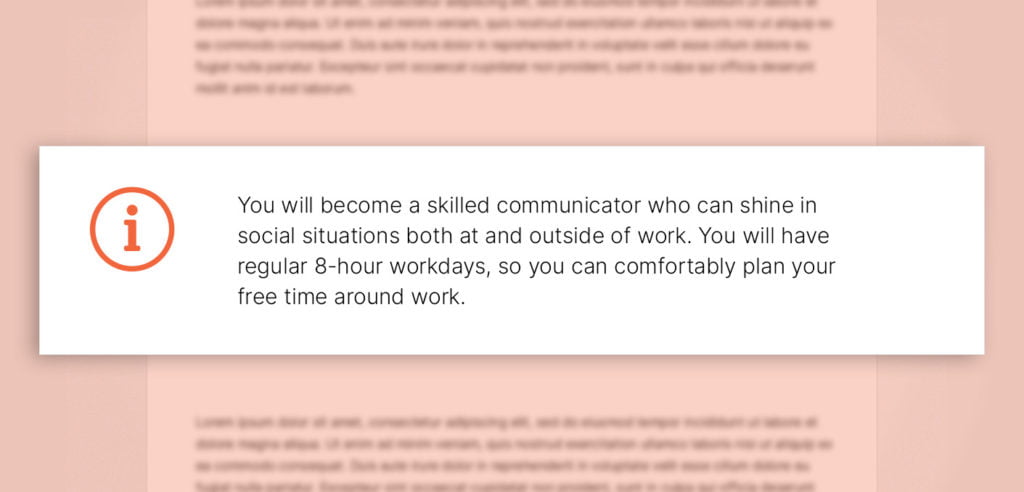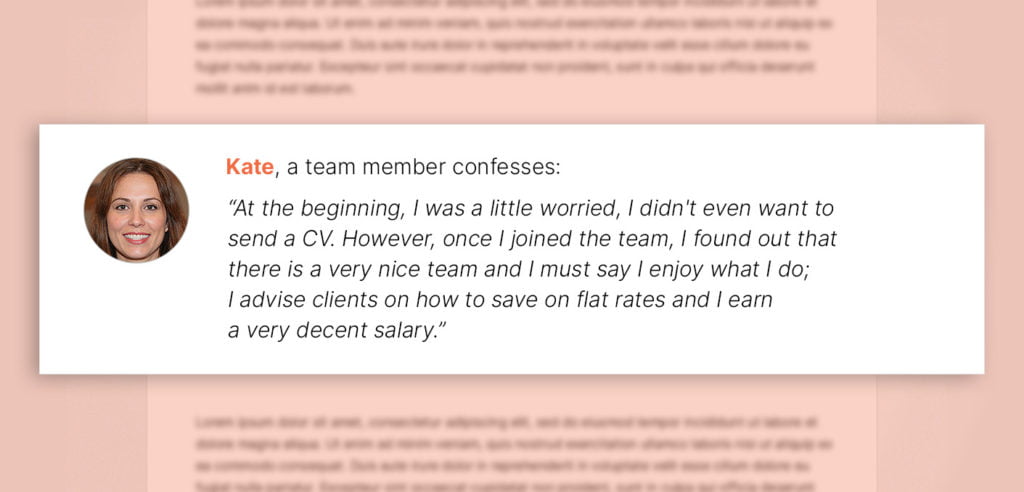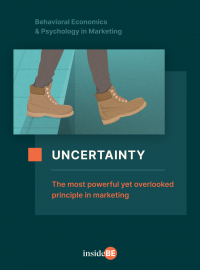Case Study: A Telco Giant Changed Job Ads Using Behavioral Insights and Attracted 3x More Candidates

In this case study, you’ll discover:
- Why understanding your audience and tailoring key messages to them is crucial;
- Why you should never underestimate the difference a good headline can make; and
- How precisely applied solutions from behavioral economics led to a threefold rise in the number of résumés.
The company this story is about is one of the world’s leading telecommunications giants with branches all around the world. Its call center operators are superheroes for many, saving them from the abyss of disconnection in this increasingly digital world.
But finding the right people for the job can sometimes feel like Mission Impossible (I see you, HR managers, you know what I’m talking about). One of the hurdles they have faced has been hiring a skilled, diverse, and highly-qualified workforce.
When its partnering call center was hiring new operators, the number of résumés they were getting could be counted on two hands. And the occasional brave souls who plucked up the courage to apply mostly didn’t fit the role. Sound familiar?
As their hiring plan was at risk, they asked Kristina Radova, MINDWORX’s seasoned behavioral consultant, to work her magic by designing the crème de la crème of job ads.
By using insights from behavioral economics and psychology, Kristina and her team addressed all the doubts that were keeping potential applicants from applying.
And the result? A threefold rise in the number of résumés received, all with much higher quality and suitability than before.
Here’s the tale of how this went down.

Discover ground-breaking ideas and fascinating solutions.
Problem: You need to speak the language of your ideal candidate
They quickly realized that the traditional approach wasn’t speaking the language of the ideal candidate. Quite the contrary: it was discouraging the right people from applying
The call center’s main problem was that they were not getting many applications. And the few they did get were not a good fit for the advertised role.
Its original job posting looked like any other regular ad. It included the description, education, skills requirements, and salary expectations. So why didn’t it work?
“From my experience of working in HR, when you write a job ad, oftentimes you rely on the traditional ‘best practices’ or hunches. More often than not, you don’t follow any special guidelines,” reveals Kristina Radova, Mindworx’s Behavioral Consultant.
But when her team analyzed the ad, they quickly realized that this traditional approach was not a good fit. It wasn’t speaking the language of the ideal candidate. Quite the contrary: it was discouraging the right people from applying.
Five steps to solve an HR problem with behavioral science
To solve this puzzle, the MINDWORX team tried these five steps that combined a pinch of science magic and a dash of HR expertise.
1. Understand the audience
The first question Kristina asked was: Who is the person that might respond to this ad? They needed to understand who the target audience was, what was important for them, and what their concerns were.
In the broader context of psychology, people fall into two groups: high and low achievers. Each group needs their job to do different things for them. Low achievers don’t usually crave responsibility and they don’t normally aim as high as the other group. They simply want a job that’s safe and stable, without too many challenges that might discourage them.
They needed to understand who the target audience was, what was important for them, and what their concerns were.
Kristina’s team realized that, while low achievers were perfect candidates for this job, the original ad was like a scarecrow in an open field – driving away the good candidates along with the bad. So they dissected the ad. Through a looking glass, they analyzed which parts might fuel low achievers’ fears.
“We tried to understand the main drivers and barriers of the target group. Only then could we address their uncertainties in how we phrased the ad,” Kristina adds.
Once they mapped out the critical points, they used behavioral economics insights to redesign the advert. The aim was clear: get more low achievers to apply.
Let’s see how they did it.
2. Create a headline that sells
The next thing the team did was review the job title. Previously, the headline listed the job role and the expected salary. Pretty standard. But it didn’t stand out from all the other ads.
On the job-seeking website, you could only see one line per ad. You had that one chance to win the prospect’s click, or let the ad get lost forever in the abyss of missed opportunities. Scary, huh? So, the team had to make sure the headline would sell.
Endowment effect
When you own something, you value it beyond its objective worth.
To make it more attractive, the team designed a solution based on a concept called the endowment effect. It explains that when you own something, you value it more than its objective value. And once you have this sense of ownership (even if it’s only psychological), you’re less likely to want to say goodbye to it. The endowment effect makes us overvalue something that we own, regardless of its objective market value.
The endowment effect is often explained by loss aversion. In short, the pain of losing an item is twice as great as the pleasure you feel when you gain something.
That’s what Kristina wanted to achieve with the new job ad headline. “We needed to make sure people clicked to see the full ad,” she adds.
And what was their trick? Yeah, you guessed right: they gave the potential candidates an idea of what they could own.
“We used the claim, Imagine your salary had no limits, followed by the job title. It was true, as there was a performance bonus which wasn’t limited by anything except their own ability. But that wasn’t being advertised before,” says Kristina.
By letting people imagine what it would feel like to be limitless, they caught the applicants’ attention in a snap. What’s more, people would not only value the opportunity more, they would be afraid of losing out if they didn’t apply. Genius.
3. Address the applicants’ concerns
Once the team had nailed the headline, the third step was to identify all the parts that might create uncertainties in the applicants’ minds. “The ad had a lot of unnecessary information that dragged it down instead of lifting it up,” Kristina explains.
What it meant in practice was that most of the traditional information had to go.
“For example, there was a whole section on requirements. We figured it might deter low achievers, so instead, we wrote it as a story of what they would do, rather than what skills they needed to have.”
The third step was to identify all the parts that might create uncertainties in the applicants’ minds.
They also took out the section on completed education, so as not to dissuade people without university degrees.
“We tried to address the most profound concerns the applicants might have. Since the role of a call center operator is a bit salesy, there was a risk of people worrying they would have to do a lot of sales.”
But this role was not about that. To address this worry, the new ad presented it as a chance to earn extra money with a little bit of effort. Who wouldn’t want that, right?
Another uncertainty was the initial training new hires had to undergo. “We knew people were worried that the training would be tough and unpaid. Rephrasing it, we said the training would be adapted to the applicant’s own pace. We explained that it was stress-free and that they would get paid for it,” recalls Kristina.

The team also tackled concerns around shady practices that are often seen when working in smaller businesses (no job contract, being paid in cash or not getting paid on time, no paid vacation etc.) They made it clear that everything was above board and reliable.
These seemingly small changes were pivotal to convince people to apply. “We shifted from the traditional to the unexpected, and it paid off,” she adds.
4. Emphasize the real benefits
An important aspect of rephrasing the ad was ditching the original ‘benefits’ for more enticing perks that had not been mentioned.
This tactic is based on behavioral principle called ‘concrete and specific’. Adding enough detail makes your message more persuasive.
The original wording did more harm than good, for three reasons: it was not that relevant or unique, there was too much information that clouded the real benefits of the job role (find out more about choice overload here), and it lowered the value of the offer.
“As the original benefits section seemed to decrease the offer’s value, we took it out,” Kristina explains. But instead of leaving it up to people to figure it out for themselves, they highlighted the real incentives of the role.
“For example, the job offered stable working hours rather than shifts, which was a huge plus in this field. We stressed that candidates could plan their time worry-free.”

The team wanted to paint a clear picture in the applicants’ minds by explaining what it would feel like to have these perks. Who wouldn’t want proper sleep and a stable schedule so you can sign up for that guitar class every Monday evening, right?
“This tactic is based on another behavioral principle called ‘concrete and specific’. Adding enough detail makes your message more persuasive,” Kristina explains.
The team figured that the target group wouldn’t play Sherlock and study every single word of the ad. These folks were searching for a job that didn’t require much effort, paid relatively well, and offered the stability that a big company could offer.
5. Make the ad relatable
When the text was ready, there was one last thing missing: evidence.
Here’s a question for you: What would you do if you wanted to learn what a certain job was like? You’d either ask Google and check what people in similar roles say they do, or you’d ask someone who does it.
There’s a principle in behavioral economics that explains how this works. It’s called social proof, a concept introduced by Robert Cialdini in his famous book, Influence: The Psychology of Persuasion. It explains why most people follow the actions of others when they’re not sure what to do.
In a moment of uncertainty, we tend to assume that people around us probably know better and that they must have more information, so we tend to follow their actions. If so many people act this way, it must be right. (Or must it, I hear you ask?)
In a moment of uncertainty, we tend to assume that people around us probably know better and that they must have more information, so we tend to follow their actions.
And let’s face it: when you’re changing jobs, you have a whole bucket of uncertainty. Perhaps even oceans of it. Is it the right move? Will I like the new role?
In these types of situations, social proof works as a great reassurance.
The team included a testimonial from a current employee who had already walked the walk and was working in the advertised position at that time.
The quote confirmed that although the person had been a little worried before they applied, the training was helpful and could be done at their speed. It also mentioned examples of what their day looked like, and even how much they earned with the bonus.

Doing this helped the applicants cast aside their fears and click that ‘apply’ button.
Three-fold rise in number and quality of résumés
The success of the new ad was huge. Thanks to Kristina’s behavioral magic, the call center saw a threefold increase in the number of résumés they received.
“The incoming applications went from 7 to 21 in the first month. The applicants were also more suitable for the role than before,” shares Kristina. All this without having to change any of the job parameters or requirements.
Same role, same salary. Different words. Boom.
“The new ad was much clearer on what the job would entail compared to the original ad. It was also friendlier and more inviting,” adds Kristina.
Key takeaways:
- Understand the audience’s uncertainties. Make sure you get to know your audience deeply and understand what makes them tick. What are their biggest fears? Once you know that, make sure you address and remove these uncertainties within your communications.
- Emphasize the benefits with the biggest impact. Once you understand your audience’s motivations, build on them. Highlight only the most relevant benefits which will make or break your ad and remove unnecessary information. Use clear language and be as concrete and specific as possible to make ads more persuasive.
- Make people feel like they own your product already. Using the endowment effect makes people feel like they already own what you’re trying to sell. Whether it’s an ad or a product, help your audience imagine how it would feel if they owned it. They’ll be more likely to decide to keep it.
- Add personal stories and social proof to win over hearts (and minds). Include a testimonial from a credible person as social proof. Make sure it acknowledges the uncertainties and concerns your audience might have, then tackle them head-on. It will help you to dispel the fears and uncertainties of your customers.






